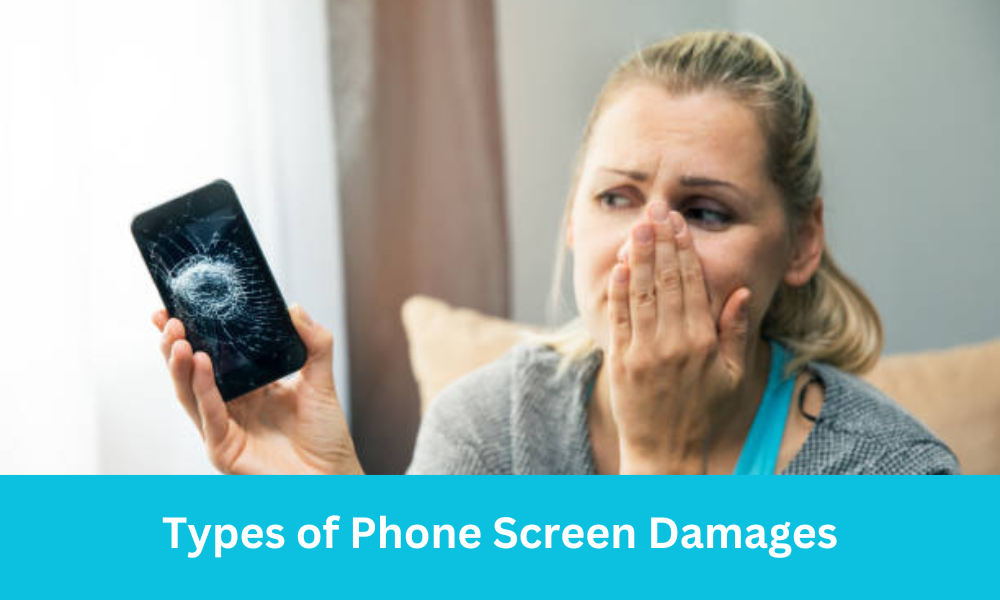Our smartphones have become indispensable. From managing work to staying connected with loved ones, we rely on our phones for almost everything. But what happens when the screen, the most crucial part of our device, gets damaged? There are different types of phone screen damages, and understanding them can help in deciding whether to repair or replace the device. In this article, we’ll delve into the most common types of phone screen damages and how they affect your phone’s performance.
Types of Phone Screen Damages
Cracked Screens
One of the most common types of Mobile phone screen damage is cracking. This occurs when the glass or the outer layer of the phone screen breaks, typically from an impact like dropping the phone.
Causes of Cracked Screens
Cracks usually occur due to drops or heavy impacts. For instance, dropping your phone on a hard surface or accidentally sitting on it can cause the glass to crack.
Minor Cracks vs. Severe Cracks
Minor cracks may only affect the surface of the glass and can be cosmetic, while severe cracks can penetrate deeper layers, affecting the touch sensitivity and even causing the phone to malfunction.
How Cracked Screens Impact Usability
A cracked screen not only affects the visual appeal but also hampers the touch sensitivity of the phone. Additionally, if the crack is severe, it might allow moisture or dust to enter, leading to further internal damage.
Scratched Screens
Unlike cracks, scratches are surface-level damages. They occur when abrasive objects like keys or coins come into contact with the screen.
Causes of Scratches
Everyday items such as keys, coins, or even rough surfaces can cause scratches. Lack of a screen protector can make the phone more susceptible to these small surface injuries.
Superficial Scratches vs. Deep Scratches
Superficial scratches can often be overlooked as they don’t affect the phone’s functionality. However, deep scratches might interfere with visibility and touch sensitivity.
Solutions for Scratched Screens
For superficial scratches, a screen protector or a polishing kit might solve the problem. However, deep scratches may require professional repair or even screen replacement.
Shattered Screens
A shattered screen is when the glass has broken into numerous pieces, making the phone nearly unusable. This type of damage is severe and usually requires immediate attention.
How Shattering Happens
Shattered screens usually result from a significant impact, like dropping the phone from a considerable height or having it hit a hard object directly.
Risks of Using a Shattered Screen
Using a phone with a shattered screen can lead to further injury, such as cuts from broken glass. It can also cause the internal components of the phone to malfunction due to exposure.
Dead Pixels and Black Spots
Dead pixels are small, unresponsive dots on the screen, while black spots refer to larger unresponsive areas. These issues can significantly affect the display’s clarity.
What Causes Dead Pixels?
Dead pixels usually appear due to manufacturing defects, physical impact, or prolonged use of the screen without giving it a break.
How to Fix Dead Pixels?
There are some DIY methods to try and revive dead pixels, like pixel-fixing apps. However, severe cases might require screen replacement.
Ghost Touch and Touch Sensitivity Issues
Ghost touch is when the phone starts responding to touches you didn’t make. This can be frustrating as it interferes with your phone’s usability.
Causes of Ghost Touch
This problem usually arises due to software glitches, moisture under the screen, or physical screen damage like cracks.
Solutions for Ghost Touch
Restarting the phone or updating the software might help. However, if the issue persists, professional diagnosis may be needed, and screen replacement could be the ultimate solution.
Water Damage
Water damage can severely affect the phone screen, causing it to malfunction or show discoloration.
Signs of Water Damage on Screens
Discoloration, flickering, and touch sensitivity issues are common signs of water damage on a phone screen.
Preventing Water Damage to Screens
The best way to avoid water damage is by using waterproof cases and keeping the phone away from water sources.
Burn-In and Image Retention
Burn-in refers to the permanent discoloration of the screen, while image retention is a temporary issue where a faint image stays on the screen even after switching apps.
OLED Burn-In
OLED screens are more prone to burn-in, where a static image permanently affects the screen’s color.
LCD Image Retention
LCD screens may experience image retention, but this is usually temporary and can be fixed by refreshing the display.
Pressure Marks and Blemishes
Pressure marks appear as discolored spots on the screen when it’s pressed too hard or when there’s internal damage due to pressure.
How Pressure Damages Screens
Sitting on your phone or carrying it in a tight pocket can cause pressure damage, resulting in these marks or blemishes.
Can Pressure Marks be Fixed?
Minor pressure marks might go away over time, but severe pressure damage might require professional intervention.
Repair or Replace: What Should You Do?
When dealing with phone screen damage, it’s essential to weigh the cost of repair versus replacement. If the damage is minor, a simple repair might suffice. However, in cases of shattered screens or severe touch issues, replacement could be the more viable option.
Factors to Consider
- Cost of repair: Is it worth spending on repairs, or should you invest in a new phone?
- Phone’s age: If your phone is older, it might be better to upgrade.
- Extent of damage: Is the damage affecting usability, or is it just cosmetic?
When to Seek Professional Help
If your phone has severe damage or you’re unsure about the best course of action, seeking professional help is recommended. DIY fixes can sometimes worsen the problem.
Conclusion
In conclusion, phone screen damage comes in various forms, from minor scratches to complete shattering. By understanding the type of damage and how it affects your device, you can make informed decisions about repair or replacement. Prevention, such as using a screen protector and a sturdy phone case, can save you from dealing with these common issues.
FAQs
- How do I know if my phone screen is beyond repair?
If the screen is shattered or the touch sensitivity is completely unresponsive, it might be beyond repair. - Can a cracked screen cause internal damage?
Yes, a cracked screen can expose internal components to dust, water, or further damage. - What is the best way to protect a phone screen?
Using a tempered glass protector and a shockproof case are the best ways to protect your phone screen. - Is it worth repairing a scratched screen?
For deep scratches that affect usability, repair is worth considering. Minor scratches can often be ignored or fixed with DIY kits. - How long do phone screen repairs usually take?
Most screen repairs take between 1 to 2 hours, depending on the model and repair




